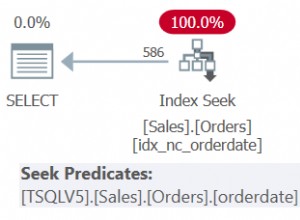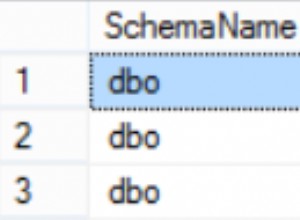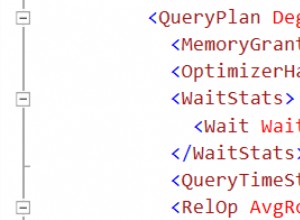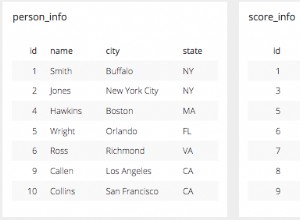In MariaDB, CURRENT_USER() è una funzione integrata che restituisce la combinazione di nome utente e nome host per l'account MariaDB utilizzato dal server per autenticare il client corrente.
Sintassi
La funzione può essere chiamata con o senza parentesi:
CURRENT_USER
CURRENT_USER()Nessun argomento è richiesto o accettato.
Esempio
Ecco un esempio da dimostrare:
SELECT CURRENT_USER();Risultato:
+------------------+ | CURRENT_USER() | +------------------+ | [email protected] | +------------------+
Senza parentesi
Come accennato, il CURRENT_USER() la funzione può essere chiamata con o senza parentesi.
Ecco un esempio senza parentesi:
SELECT CURRENT_USER;Risultato:
+------------------+ | CURRENT_USER | +------------------+ | [email protected] | +------------------+
Stesso risultato.
Utente anonimo
Ecco un esempio di cosa succede quando si è connessi come anonimi.
Connettiti usando anonymous :
mariadb --user="anonymous"
Esegui CURRENT_USER :
SELECT CURRENT_USER;Risultato:
+--------------+ | CURRENT_USER | +--------------+ | @localhost | +--------------+
CURRENT_USER() rispetto a USER()
Il CURRENT_USER() la funzione non restituisce sempre lo stesso risultato di USER() funzione (e i suoi sinonimi SYSTEM_USER() e SESSION_USER() ).
Esempio:
SELECT
CURRENT_USER,
USER(),
SYSTEM_USER(),
SESSION_USER();Risultato:
+--------------+---------------------+---------------------+---------------------+ | CURRENT_USER | USER() | SYSTEM_USER() | SESSION_USER() | +--------------+---------------------+---------------------+---------------------+ | @localhost | [email protected] | [email protected] | [email protected] | +--------------+---------------------+---------------------+---------------------+
Nessun argomento è accettato
Passando qualsiasi argomento a CURRENT_USER() restituisce un errore:
SELECT CURRENT_USER(1);Risultato:
ERROR 1064 (42000): You have an error in your SQL syntax; check the manual that corresponds to your MariaDB server version for the right syntax to use near '1)' at line 1




